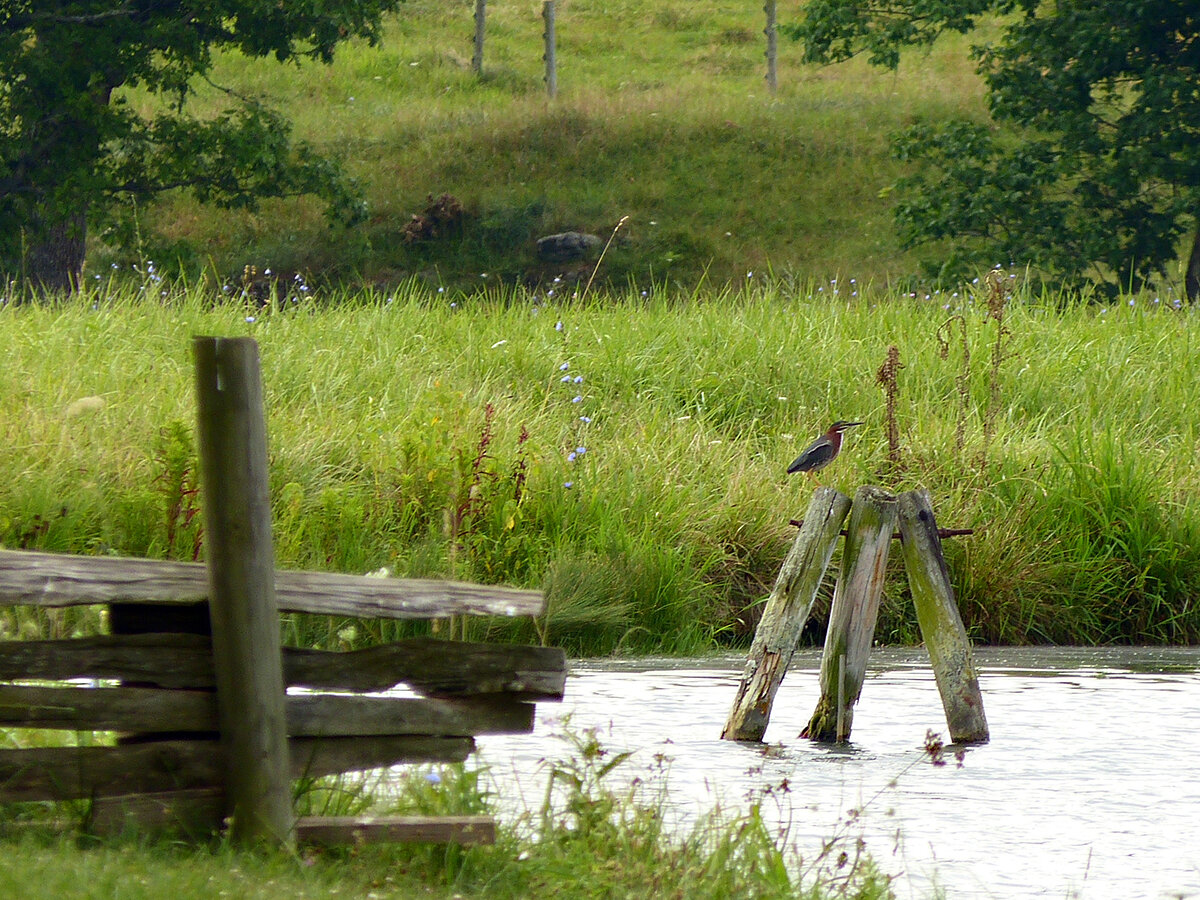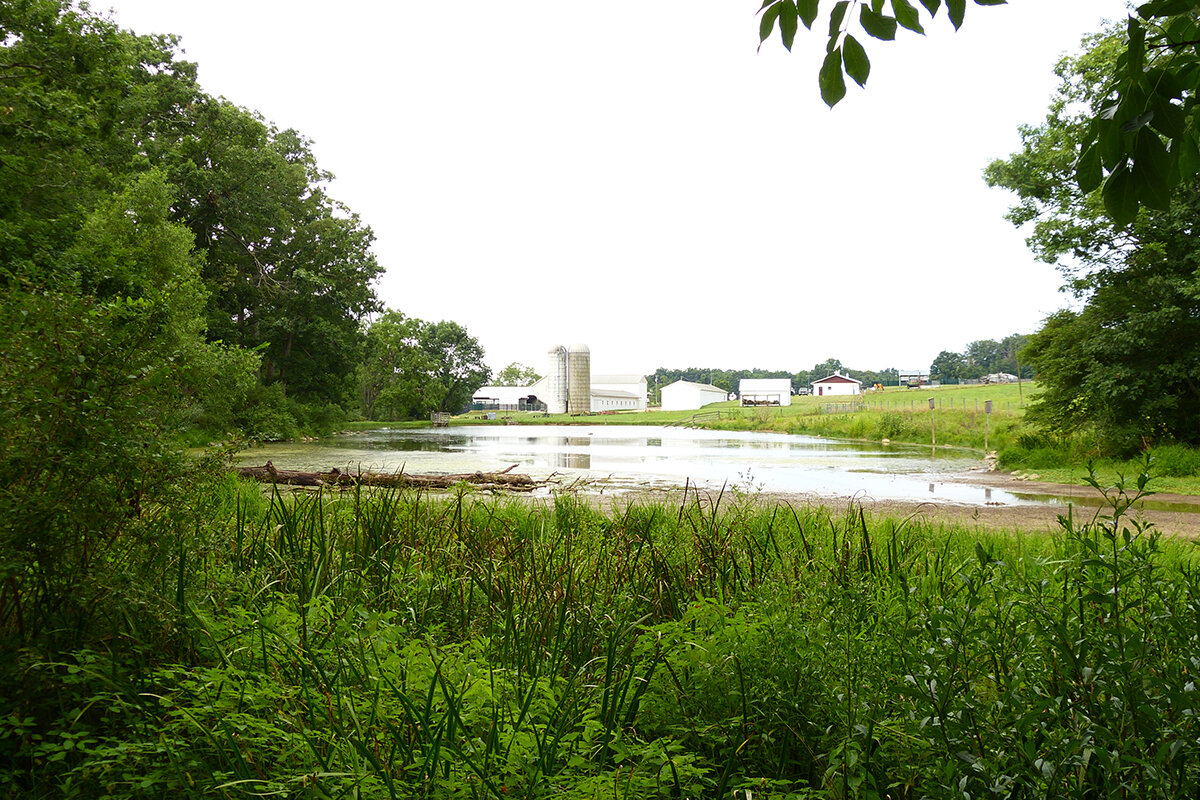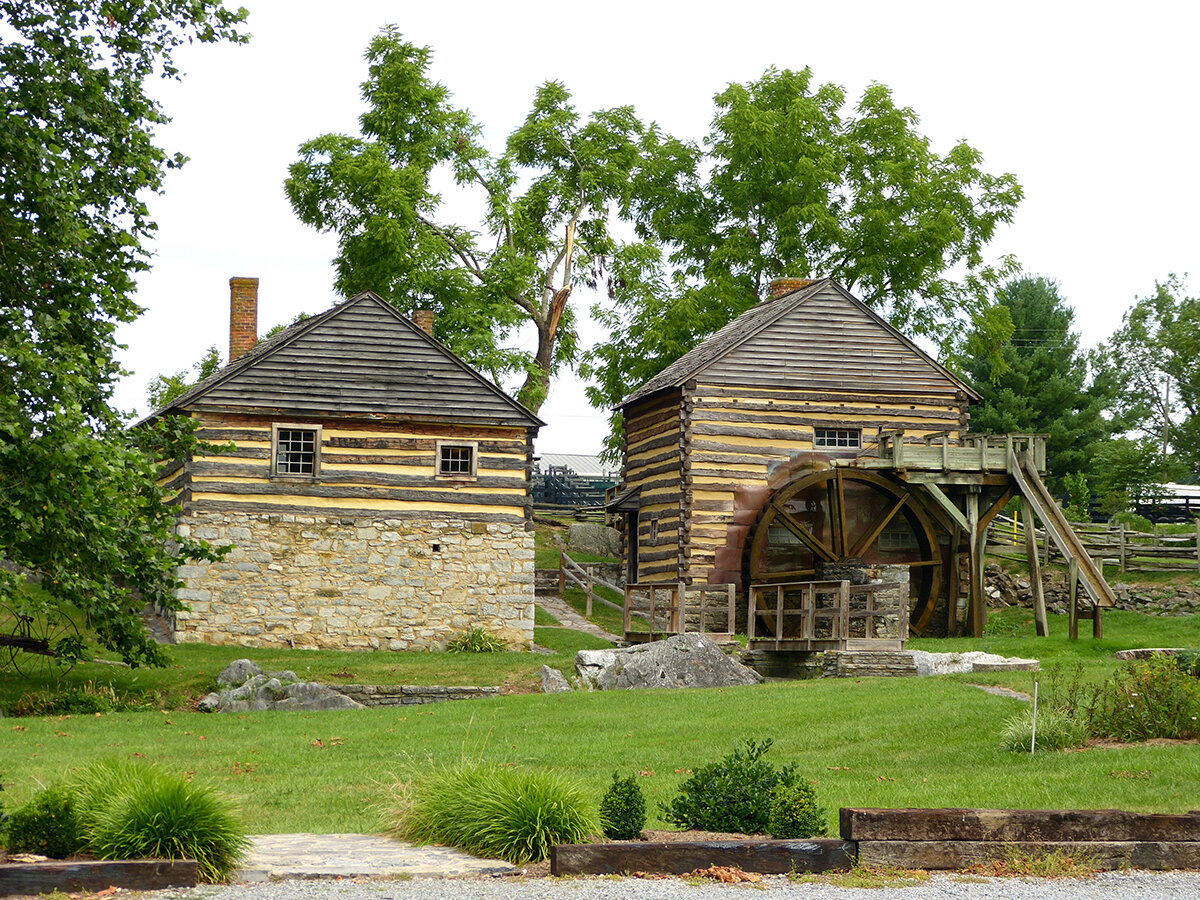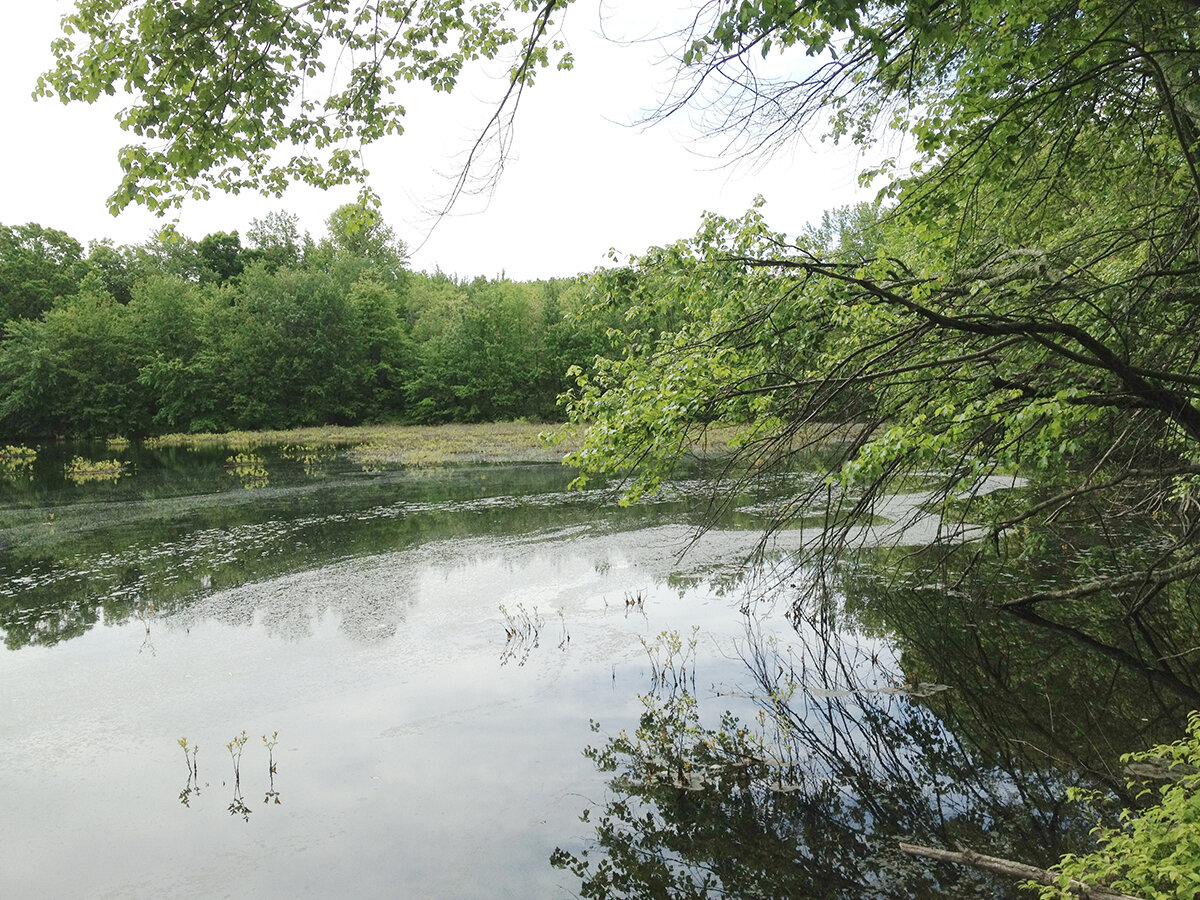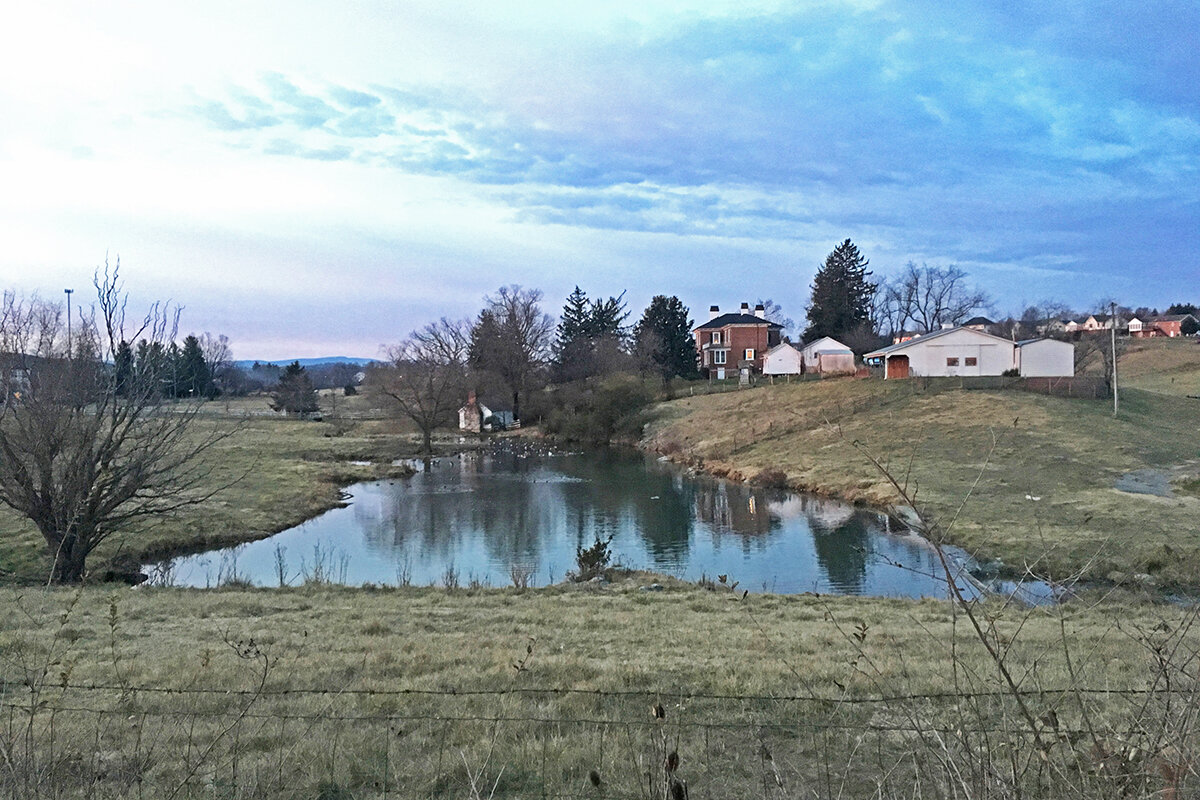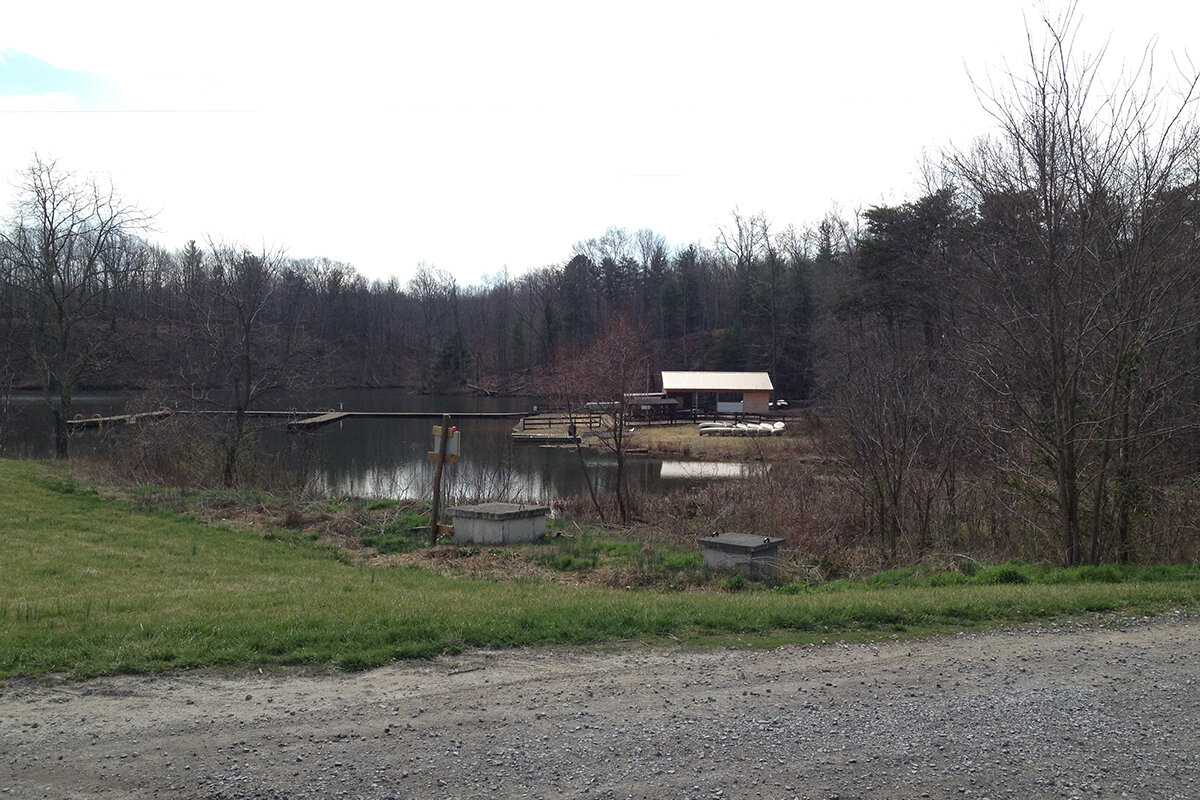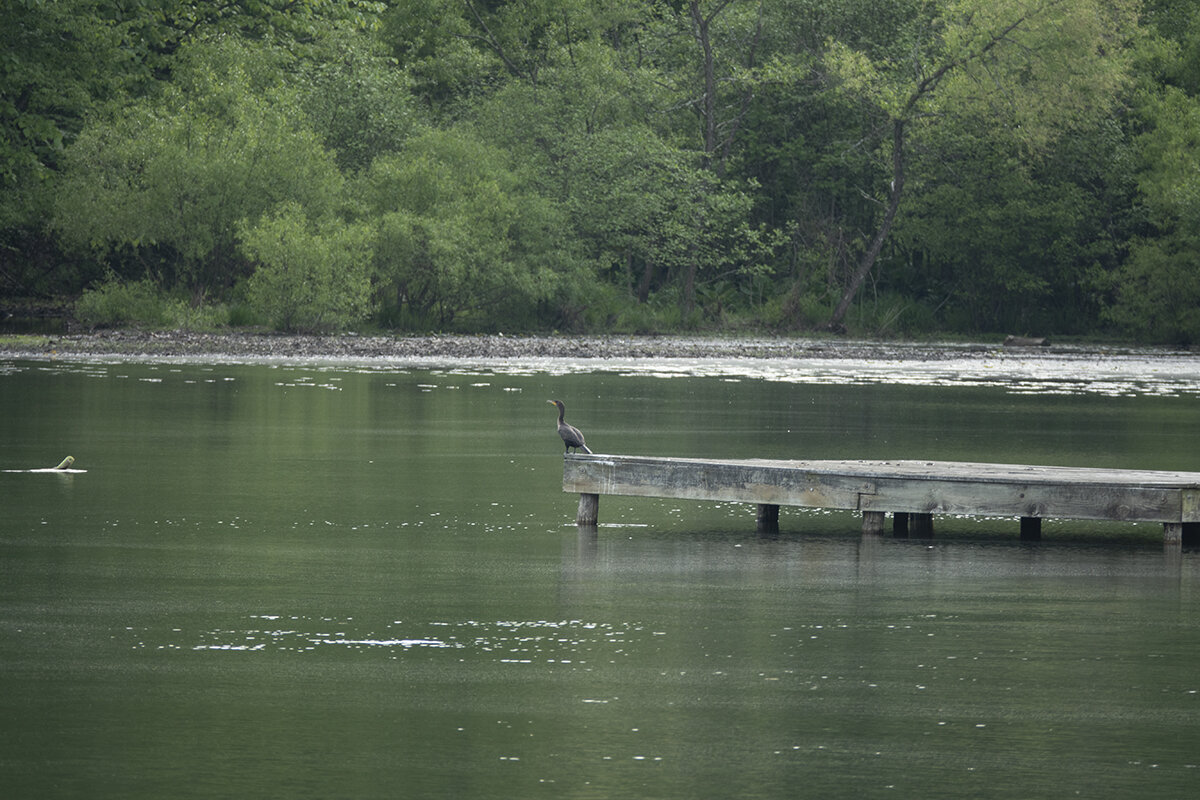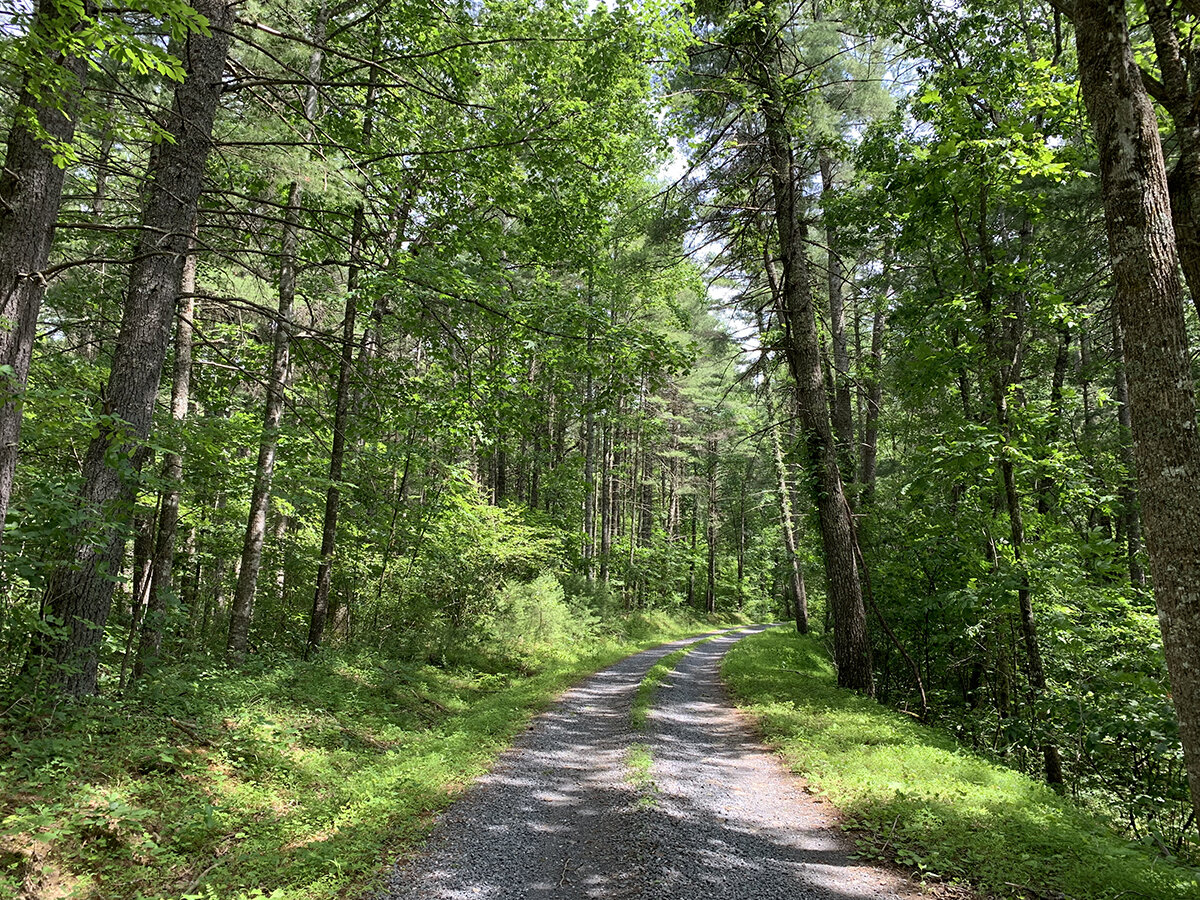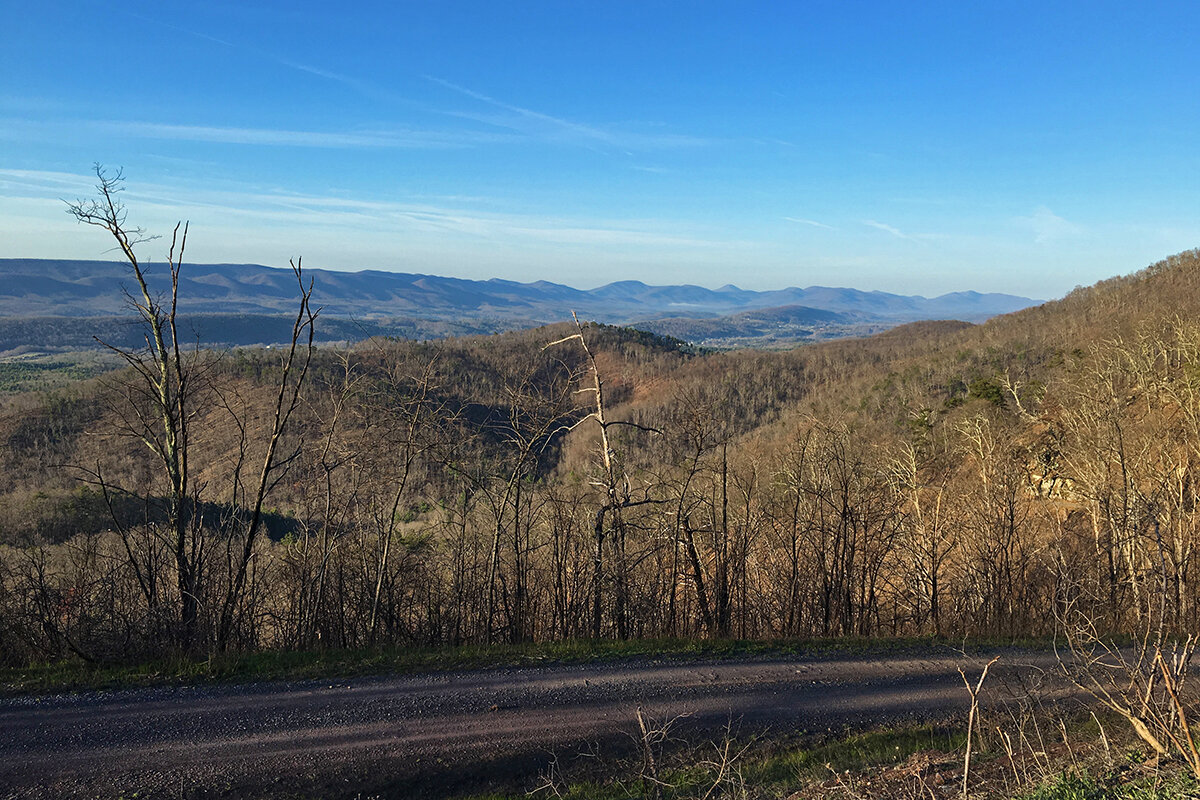Little Run Rd (1.7 miles) runs along the east boundary of the Shenandoah Airport between Snowflake Mill Rd and Craig Shop Rd. The north end passes through open fields and some overgrown fence rows where one can find Eastern Meadowlark, Eastern Kingbird, Grasshopper Sparrow, White-throated and White-crowned Sparrows, American Kestrel, Dark-eyed Junco, and Northern Harrier. There is a small wet area with cattails next to the airport fence, that is an oasis for birds in the summer. The fields near the airport often hold wintering Short-eared Owls that can be seen at dusk. The southern portion passes through mixed forest, some more open fields, and crosses over a small creek (Broad Run). Here one can find plenty of sparrows (Grasshopper, Field, Song, Chipping, Savannah), Orioles, Blue Grosbeak, Common Yellowthroat, and a nice variety of swallows. Birders often continue on to the southeast on Craig Shop Rd that eventually meets up with Battlefield Rd. Here it runs parallel with the Middle River and passes through more open fields. Scan the river and its trees for waterfowl, Bobolink in the spring and Bald Eagle while scanning the fields for Grasshopper Sparrow, Blue Grosbeak, and raptors.
eBird Hotspot: Little Run Road
—Vic Laubach





